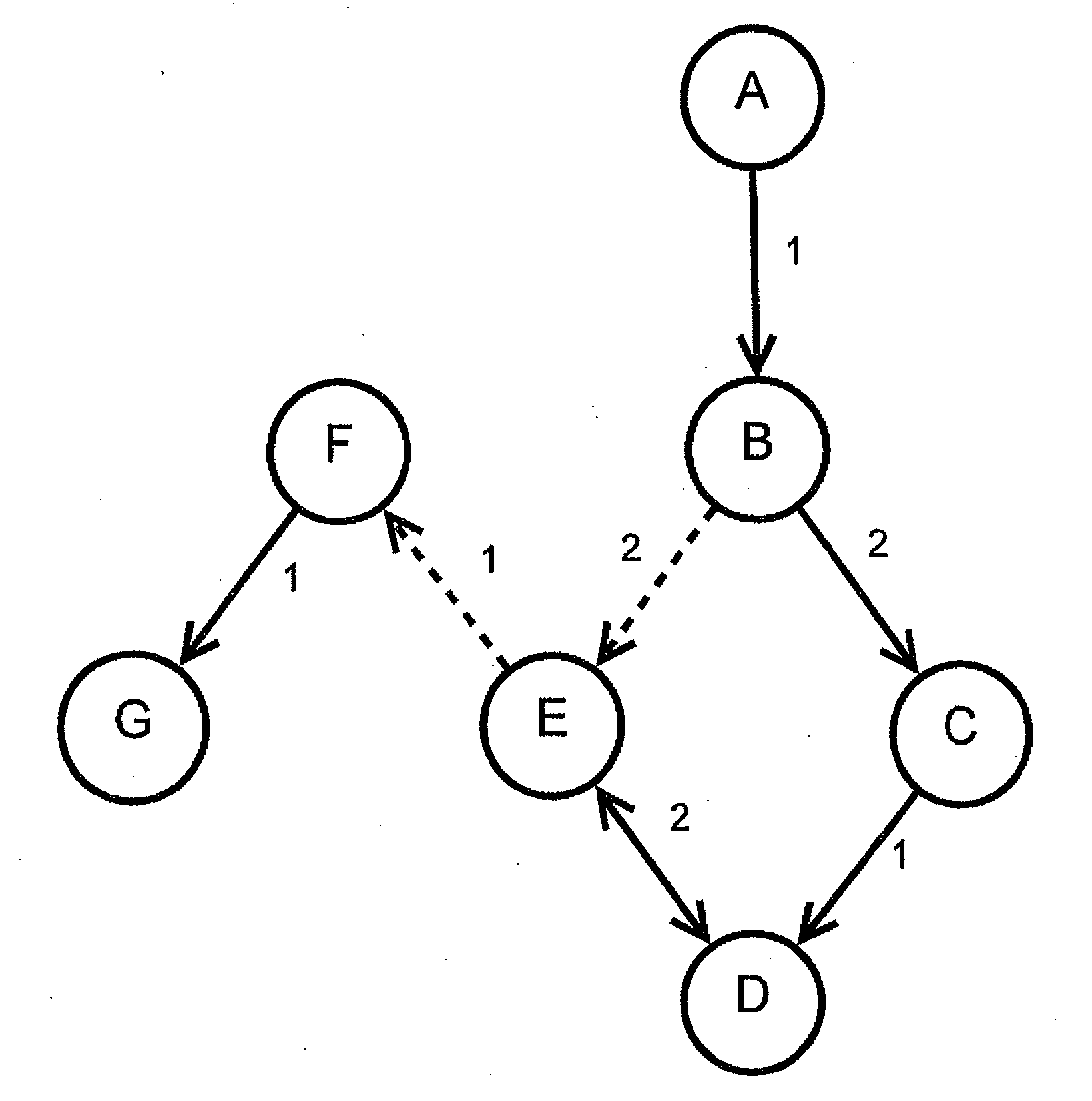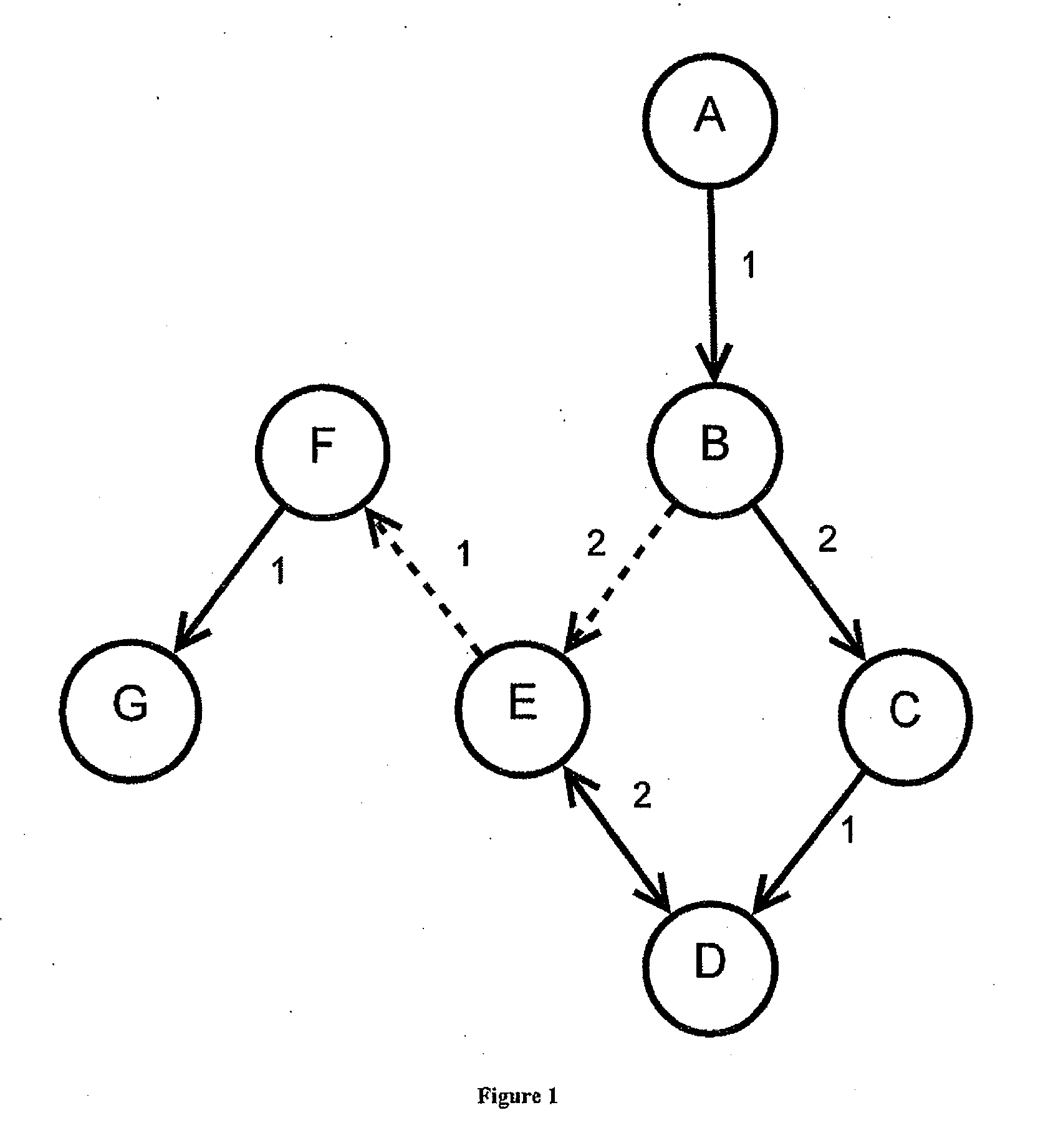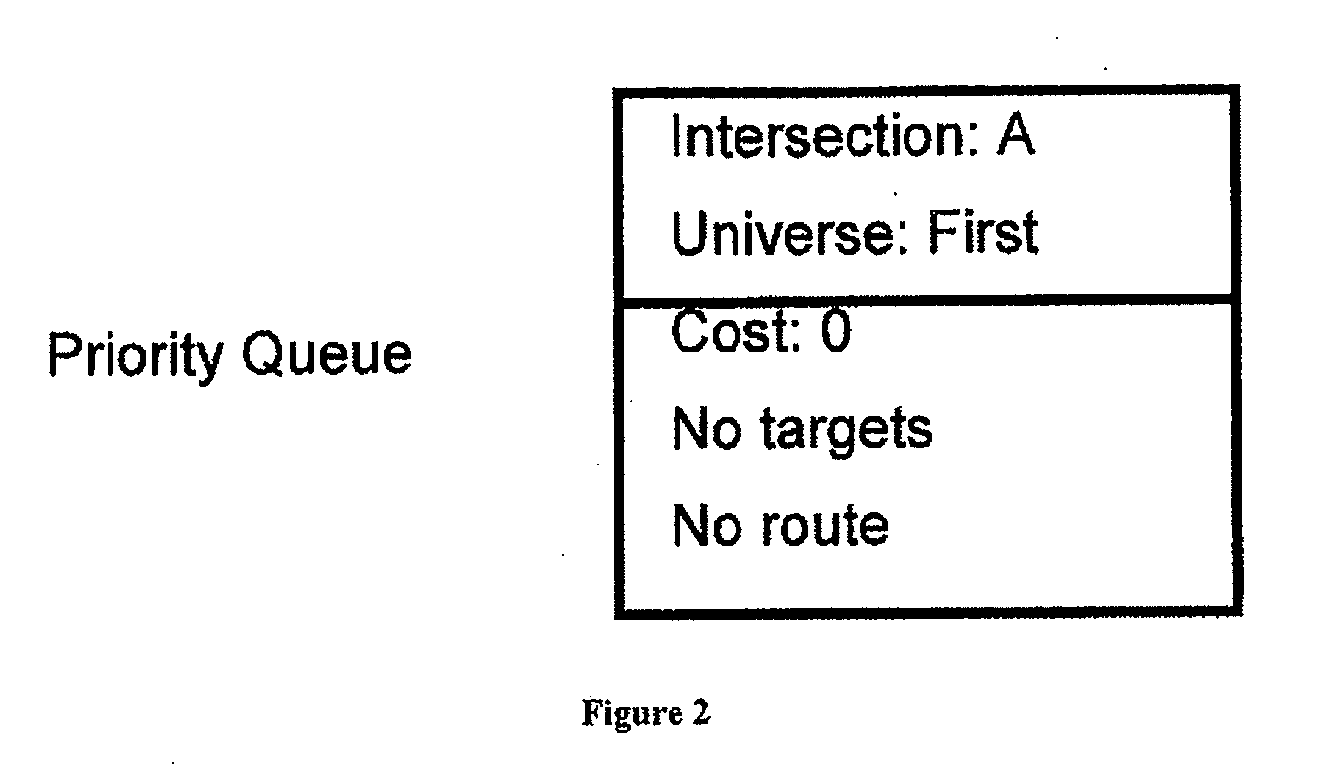System and method for efficient routing on a network in the presence of multiple-edge restrictions and other constraints
a network and constraint technology, applied in the field of systems and methods for solving the problem of shortest path on a graph with multi-edge constraints, can solve the problems of dijkstra's algorithm not finding the quickest route between two locations in a city, all have considerable limitations,
- Summary
- Abstract
- Description
- Claims
- Application Information
AI Technical Summary
Benefits of technology
Problems solved by technology
Method used
Image
Examples
Embodiment Construction
[0036]Further features and advantages of embodiments, as well as the structure and operation of various embodiments, are described in detail below with reference to the accompanying FIGS. 1-22. The embodiments are described in the context of a road network, wherein letters indicate intersections, arrows indicate street direction, numerals indicate the cost of traversing the street, and dotted lines indicate streets with some restrictions placed on them. Nonetheless, one of ordinary skill in the art readily recognizes that embodiments are applicable in numerous fields and contexts which require efficient routing or travel between two nodes on a graph, such as data routing, package routing, video game play, etc.
[0037]Referring now to FIG. 1, depicted is a simplified abstraction of a road network according to an embodiment. Each street between intersections A, B, C, D, E, F, and G has a cost associated with it. These are the costs for utilizing the edges in the graph, and, in some embo...
PUM
 Login to View More
Login to View More Abstract
Description
Claims
Application Information
 Login to View More
Login to View More - R&D
- Intellectual Property
- Life Sciences
- Materials
- Tech Scout
- Unparalleled Data Quality
- Higher Quality Content
- 60% Fewer Hallucinations
Browse by: Latest US Patents, China's latest patents, Technical Efficacy Thesaurus, Application Domain, Technology Topic, Popular Technical Reports.
© 2025 PatSnap. All rights reserved.Legal|Privacy policy|Modern Slavery Act Transparency Statement|Sitemap|About US| Contact US: help@patsnap.com



